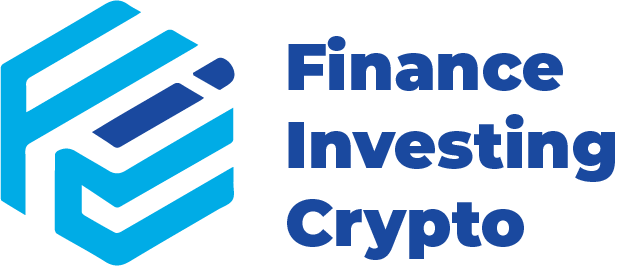Disclosure: The views and opinions expressed here belong solely to the author and do not represent the views and opinions of crypto.news’ editorial.
For most of its history, decentralized finance and traditional finance have been at odds. Positioned as opposing forces, one claimed transparency, permissionless access, and composability, while the other relied on regulation, scale, and institutional trust. But the confluence of finance and technology has never been a zero-sum game.
The convergence is already underway. Institutional giants like BlackRock are experimenting with tokenized funds on public blockchains, while regulators across Asia and Europe are building policy frameworks for the integration of DeFi rails into mainstream financial infrastructure. In East Asia alone, two-thirds of on-chain activity is being driven by non-retail players, a sign that utility, regulatory clarity, and risk standards are fundamental prerequisites for DeFi’s next chapter. These telling shifts reveal that the future will not be built on the ruins of one system but at the intersection of both.
Why DeFi alone isn’t enough
Despite its promise, DeFi has yet to break through to the mainstream. On the UX front, many products remain cumbersome, fragmented, or opaque, designed by developers for developers, not everyday users. From Frankenstein-like interfaces that lack intuitive design to convoluted onboarding flows, too much of DeFi still feels like a puzzle only insiders are equipped to solve.
From digital wallets and transaction fees to staking and siloed blockchain networks, entering the world of web3 appears considerably daunting. Though public enthusiasm for crypto has grown in recent years, nearly one in five cryptocurrency owners have had difficulty accessing or withdrawing their funds from custodial platforms.
Security remains a glaring issue. DeFi is often caricatured as an amalgamation of risk problems and regulatory red flags, as demonstrated in 2024, where $2.2 billion was stolen in crypto-related hacks and exploits, which revealed pervasive structural risks. But promising signs are emerging: the U.S. Senate just passed the GENIUS Act to regulate stablecoins, while recent SEC discussions have positioned DeFi as potentially embedded with core regulatory values.
This exposes an underlying reality that the current state of DeFi is not equipped to scale on its own. It needs allies. More specifically, it needs the infrastructure, legal frameworks, and user trust that TradFi has spent decades building. While regulatory momentum is shifting, to win over TradFi loyalists definitively, DeFi needs formidable, tried-and-true support.
Rails reimagined: When legacy pipes meet programmable money
We’ve already seen early examples of this paradigm. Centralized exchanges proved long ago that a friendly façade is what turns arcane systems into mass-market products: Binance now counts about 275 million registered users worldwide. Solving the last-mile problem explains why CEXs have historically attracted more investors and traders than their DeFi counterparts, in no small part due to the outsized accessibility advantage.
That same principle is guiding the next wave of financial products. Consider how BlackRock’s BUIDL fund amassed $245 million in tokenized shares on Ethereum (ETH) within the first week of its launch.
That reciprocal exchange of DeFi leaning on TradFi’s regulatory muscle, and TradFi adopting DeFi’s borderless rails, is becoming the natural next step to fuel sustainable growth. This convergence is not a compromise, but a realignment that offers a seamless entry point into a parallel financial system, while retaining familiarity with fiat payments and the confidence of traditional banking flows.
Invisible infrastructure, everyday impact
Like plumbing, good financial infrastructure should be invisible. UR, our borderless smart money app, embodies this principle with a unified account for fiat and stablecoins under full on-chain custody, making blockchain the invisible enabler of everyday finance.
But the real transformation is structural. By designing for both TradFi and DeFi, UR bridges systems that have long operated in parallel. This ensures that users do not have to choose between a dollar and a stablecoin, or between compliance and decentralized control. It gives them both because the boundaries are already dissolving.
Institutional interest in crypto is no longer abstract; it is a strategic imperative. Governments are crafting tax exemptions, legal frameworks, and digital asset recognition policies. Banks are testing stablecoin issuance. The question is not whether the financial stack will evolve, but who will shape it. The timing, too, is no coincidence. Institutional and regulatory interest in blockchain is reaching new highs, with a growing appetite for robust infrastructure and real-world financial utility that leverages the transformative powers of decentralization.
If crypto wants to move from a speculative sidecar to a central pillar, it must offer tools that are legible to regulators, usable to institutions, and capable of integrating seamlessly into consumers’ lives, without losing the open architecture that makes the technology revolutionary.
Banking built on blockchains, not built to replace them
For DeFi to matter, it must become part of the way people live—embedded, intuitive, and trustworthy. Just as the early internet faded behind the apps and platforms we use every day, DeFi will meld into the financial systems we already trust by embedding its principles into tools and interfaces that are usable, secure, and intuitive.
As institutions step into decentralized infrastructures and modular architectures, what we’re witnessing isn’t DeFi compromising to fit the old world; it’s the financial stack being rewritten to reflect a new one.
To get there, we need more full-loop systems, equipped with products that abstract complexity without erasing control. Above all, we need to build for the users we haven’t yet reached. That’s what the next chapter of finance demands: not a parallel system but a unified one that is open, resilient, and built for how people truly live, spend, and save.










